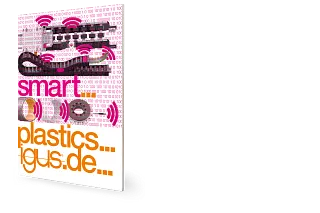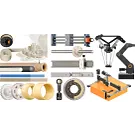Change Language :
Train washing station: predictive maintenance
Intelligent sensor technology in condition monitoring and predictive maintenance in train wash system
The train wash of the Société Nationale des Chemins de Fer Luxembourgeois (CFL) cleans local and long-distance trains every day in its 200 metre long wash hall. Several energy chains are used to ensure that the washing trolleys run on both sides of a train, safely guiding all the hoses and cables for energy, data, compressed air, water and cleaning agents. Previously, costly chain failures occurred more and more frequently. For this reason, energy chains are now used together with intelligent sensor technology that monitors the condition of the system and plans predictive maintenance.

Overview of smart plastic
Our new brochure shows you everything at a glance
Topic overview:
- Condition monitoring (i.Sense)
- Condition monitoring products
- Application examples of condition monitoring
- predictive maintenance (i.Cee)
- Application examples for predictive maintenance
- How does the data flow with predictive maintenance?
Consulting
I look forward to answering your questions

Shipping and consultation
In person:
Monday to Friday from 8 am - 5 pm.


